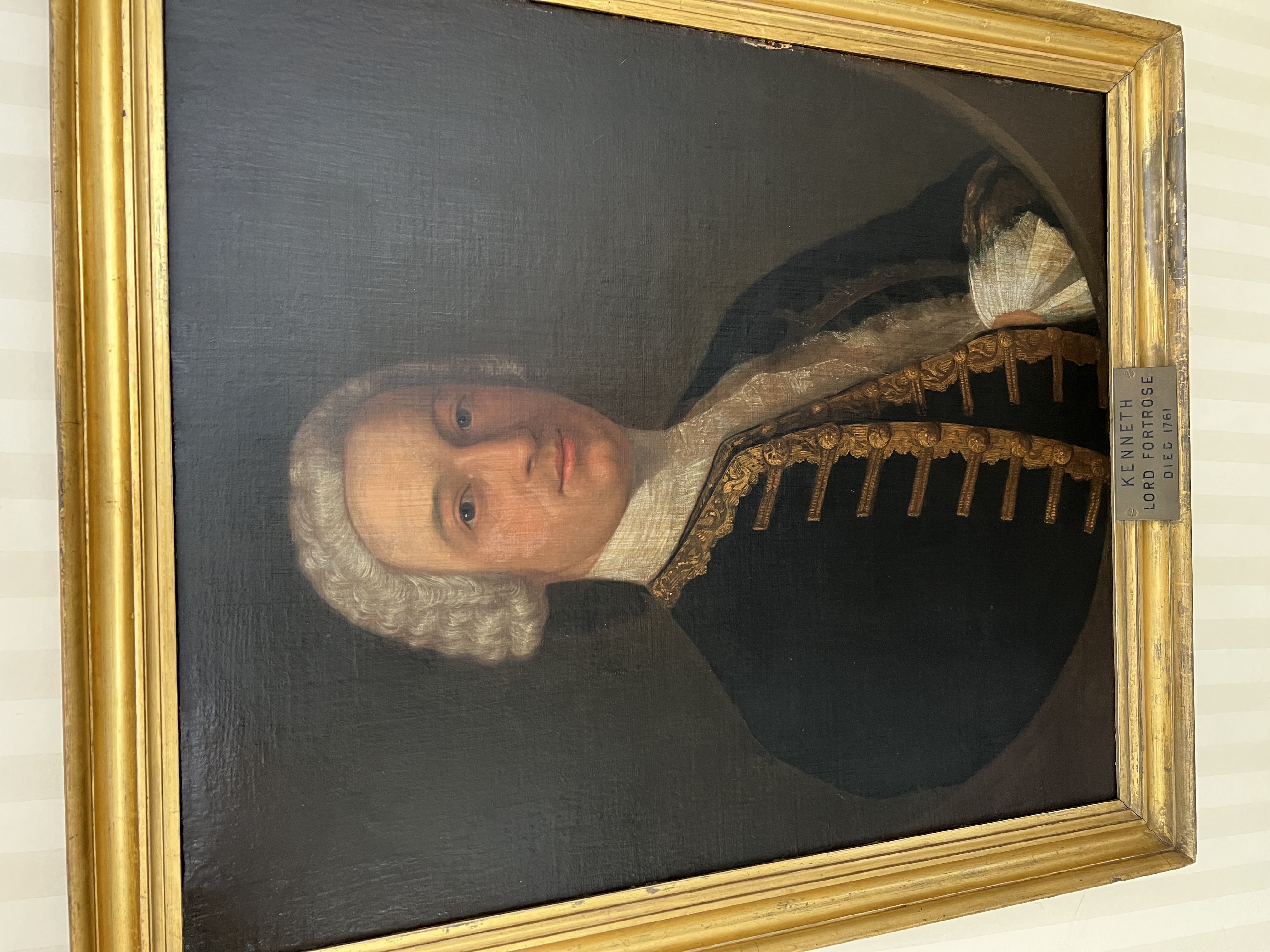Kenneth Mackenzie, Lord Fortrose on:
[Wikipedia]
[Google]
[Amazon]
Kenneth Mackenzie, Lord Fortrose (1717 – 18 October 1761)Mosley, Charles, editor. Burke's Peerage, Baronetage & Knightage, 107th edition, 3 volumes. Wilmington, Delaware, U.S.A.: Burke's Peerage (Genealogical Books) Ltd, 2003. Volume 1, page 977. was a British politician and (by right of his ancestry) 
 Mackenzie was the eldest son of
Mackenzie was the eldest son of
Chief
Chief may refer to:
Title or rank
Military and law enforcement
* Chief master sergeant, the ninth, and highest, enlisted rank in the U.S. Air Force and U.S. Space Force
* Chief of police, the head of a police department
* Chief of the boa ...
of the Highland
Highlands or uplands are areas of high elevation such as a mountainous region, elevated mountainous plateau or high hills. Generally speaking, upland (or uplands) refers to ranges of hills, typically from up to while highland (or highlands) is ...
Clan Mackenzie
Clan Mackenzie ( gd, Clann Choinnich ) is a Scottish clan, traditionally associated with Kintail and lands in Ross-shire in the Scottish Highlands. Traditional genealogies trace the ancestors of the Mackenzie chiefs to the 12th century. However ...
.

Origins
 Mackenzie was the eldest son of
Mackenzie was the eldest son of William Mackenzie, 5th Earl of Seaforth
William Mackenzie, 5th Earl of Seaforth (died 1740), and 2nd titular Marquess of Seaforth (in the Jacobite Peerage), also known as Uilleam Dubh, or Black William, was a Scottish peer and head of Clan Mackenzie. Educated in France and brought up ...
(died 1740) by his wife Mary, only daughter and heiress of Nicholas Kennet of Coxhow oxhoe in Kelloe parish, County Durham His father had taken part in the Jacobite rising of 1715
The Jacobite rising of 1715 ( gd, Bliadhna Sheumais ;
or 'the Fifteen') was the attempt by James Edward Stuart (the Old Pretender) to regain the thrones of England, Ireland and Scotland for the exiled Stuarts
The House of Stuart, ori ...
and had forfeited his estates and title under the Act of Attainder
A bill of attainder (also known as an act of attainder or writ of attainder or bill of penalties) is an act of a legislature declaring a person, or a group of people, guilty of some crime, and punishing them, often without a trial. As with attai ...
of 1716.Sir James Balfour Paul, ''The Scots Peerage
''The Scots Peerage'' is a nine-volume book series of the Scottish nobility compiled and edited by Sir James Balfour Paul, published in Edinburgh from 1904 to 1914. The full title is ''The Scots Peerage: Founded on Wood's Edition of Sir Robert ...
'', volume VII (Edinburgh, David Douglas, 1910), at page 512
Career
Mackenzie supported theGovernment
A government is the system or group of people governing an organized community, generally a state.
In the case of its broad associative definition, government normally consists of legislature, executive, and judiciary. Government is a ...
during the Jacobite rising of 1745
The Jacobite rising of 1745, also known as the Forty-five Rebellion or simply the '45 ( gd, Bliadhna Theàrlaich, , ), was an attempt by Charles Edward Stuart to regain the Monarchy of Great Britain, British throne for his father, James Franci ...
. He represented the constituencies of Inverness Burghs between 1741 and 1747, and Ross-shire
Ross-shire (; gd, Siorrachd Rois) is a historic county in the Scottish Highlands. The county borders Sutherland to the north and Inverness-shire to the south, as well as having a complex border with Cromartyshire – a county consisting of ...
between 1747 and 1761.
He died in London on 18 October 1761 and was buried in Westminster Abbey
Westminster Abbey, formally titled the Collegiate Church of Saint Peter at Westminster, is an historic, mainly Gothic church in the City of Westminster, London, England, just to the west of the Palace of Westminster. It is one of the United ...
.
Family
Mackenzie married (11 September 1741) Mary, eldest daughter ofAlexander Stewart, 6th Earl of Galloway
Alexander Stewart, 6th Earl of Galloway ( – 24 September 1773) was a Scottish aristocrat.
Early life
Alexander was the eldest son of Lady Catherine Montgomerie and James Stewart, 5th Earl of Galloway, a Commissioner of the Scottish Treasury an ...
. She died on 10 April 1751 and is buried at St Mary Abbots Church, Kensington.
Their children were:
* Kenneth Mackenzie, 1st Earl of Seaforth
Kenneth Mackenzie, 1st Earl of Seaforth FRS (15 January 1744 – 27 August 1781) was a British peer, politician, soldier and Chief of the Highland Clan Mackenzie.
Origins
Mackenzie was the son of Kenneth Mackenzie, Lord Fortrose (died 1761) ...
(15 January 1744 – 27 August 1781), who married, first, Lady Caroline Stanhope and, second, Harriet Lamb; he had one child from his first marriage.
* Margaret Mackenzie, who married (4 June 1785) William Webb, no known children.
* Mary Mackenzie (died 29 January 1826), who married Henry Howard and had one child.
* Agnes Mackenzie, who married J. Douglas, one child.
* Catherine Mackenzie, who married (1 March 1773) Thomas Griffin Tarpley, had at least one child.
* Frances Mackenzie, who married Joseph Wall (later hanged for flogging soldiers to death), had children.
* Euphemia Mackenzie (25 January 1751 – 14 February 1817), who married William Stewart of Castle Stewart and had children.''The Register of Births & Baptisms in the Parish of St James within the Liberty of Westminster Vol. IV. 1741-1760''. 24 February 1750.
References
{{DEFAULTSORT:Mackenzie, Kenneth, Lord Fortrose 1717 births 1761 deathsKenneth
Kenneth is an English given name and surname. The name is an Anglicised form of two entirely different Gaelic personal names: ''Cainnech'' and '' Cináed''. The modern Gaelic form of ''Cainnech'' is ''Coinneach''; the name was derived from a byna ...
Members of the Parliament of Great Britain for Scottish constituencies
Burials at Westminster Abbey
Anglo-Scots
Year of birth uncertain
British MPs 1741–1747
British MPs 1747–1754
British MPs 1754–1761
Seaforth, Kenneth Mackenzie, 3rd Marquess of